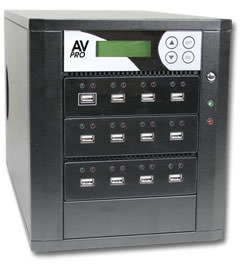USB Duplication

Duplicating USB drives involves the use of a USB drive duplicator to copy content (such as documents, audio, video, images, programs or other data) on to blank USB drives at high-volume production capabilities.
Customers who choose not to invest time and money into in-house or personal USB drive duplication equipment might choose to outsource their USB drive preloading services to a professional. In either case, adding content to a drive before it reaches the end user provides both ease of use and brand reinforcement.
Automatic launching and data locking are two features that duplication services can provide to supplement and enhance a customer’s USB drive preload needs. With auto launching, once a flash drive is inserted into a computer’s USB port, the user will instantly see an interactive splash screen or menu displayed on the computer’s monitor. This feature is not just an initial function. Rather, it can be set to occur every time a drive is used.
Auto Launch Menus
A USB drive auto launch is helpful in making an impression for the individual using it and can guide that targeted user to specific content on the thumb drive. Interactive preloaded menus include choices in display features and button navigation to uncover the drive’s content, subpages and even webpages. A USB AutoRun file saved on a flash drive is also read by the computer as a file that can’t be deleted. This allows for the preservation of a business or marketing strategy through the use of a USB flash drive.
Data Lockdown
USB data locking is another extension of preloading as well as part of the mechanics behind auto loading. With data lock, particular files cannot be deleted by the end user or client in order to maintain not only branding, but also the safekeeping of important files. The basic premise of creating non-erasable USB flash drive content is the encryption of selected files that are partitioned and rendered undeletable.
Data locking will work on a selected number of files that can still allow for the free use of any remaining storage on a drive, thus maintain the function that users require for data storage. A duplication service is able to perform such functions on a thumb drive. A customer must submit the desired files to be locked for non-erasable purposes and the chosen service will encrypt the drives with data lock and reproduce them at the desired high-volume quantity.
